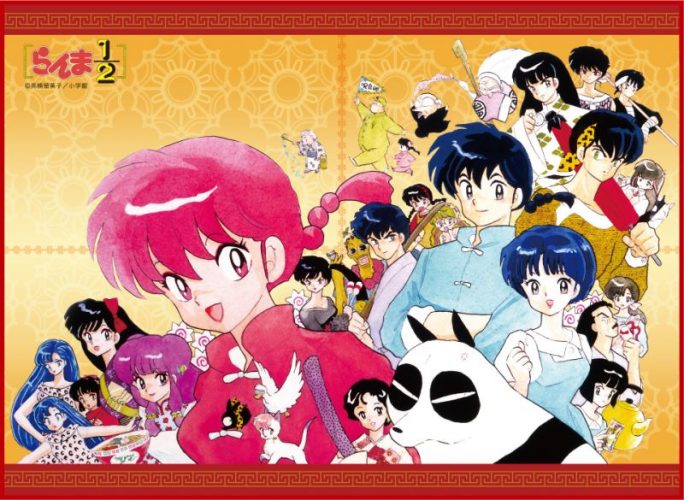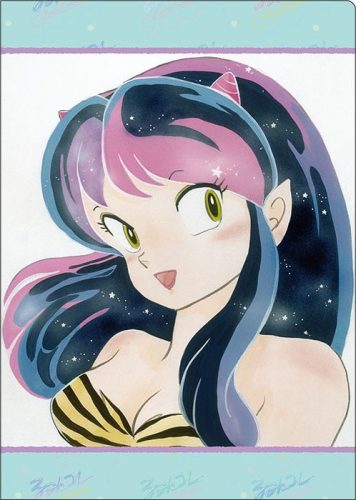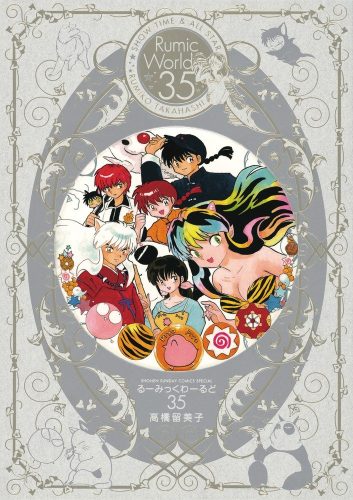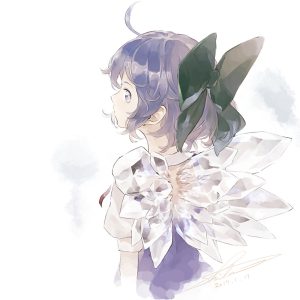
If you’re a manga fan and don’t know the name Rumiko Takahashi, you should. She’s one of the most successful mangaka in Japan, with a long career of success. In fact, she’s won the Shogakukan Manga Award not once, but twice. Her work had been published around the world in a variety of languages. And there are over 200 million copies of her manga in circulation! Still not sure who she is, but beginning to understand how significant her career has been?
Anime and manga fans have undoubtedly heard of Inuyasha, and many have read or watched it. Well, you can thank Rumiko Takahashi, because she is the original mangaka for the series! While Inuyasha is arguably one of her most famous works, it’s by far not her only successful manga. So how did Rumiko Takahashi becomes a mangaka? Where did she begin, and what did she do before she became as successful as she is? Read on to find out as we explore the career of Rumiko Takahashi!
An Unexpected Career
While many mangaka will say that they wanted to be at least some kind of artist most of their lives or say that they knew from a young age that their calling was to be a mangaka, Rumiko Takahashi is very different. When she was a child, she actually didn’t show any interest in being a mangaka. Sure, sometimes she would doodle in a notebook or draw small pictures, but so do many children. She was not seeking out a future in the art field originally. But as she got older, a new interest in manga began to emerge.
By the time Rumiko Takahashi was entering university, she was on the road to becoming a professional mangaka. She enrolled in Genkiga Sonjuku, a manga academy, and began to study quite seriously. Under the wing of famous mangaka Kazuo Koike, Takahashi began to publish her first doujinshi, or fan-made comics, in 1975. It was the true start to her career as a mangaka, and though it was small, it was just the beginning of something great. Under Koike’s guidance, Takahashi always created deep characters with well thought out personalities, something she claims she does to this day thanks to his teaching
An Uphill Battle

After her first few successful doujinshi, Bye-Bye Road and Star of Futile Dust, things started to really get rolling. Three years later in 1978, Rumiko Takahashi published her first one-shot story called Katte na Yatsura. This story went on to win Shogakkan New Comics Award and let the manga world know that someone talented and new had entered the scene. The same year, Takahashi began to publish her first serial manga, Urusei Yatsura, in Weekly Shōnen Sunday.
However, Rumiko Takahashi did not reach fame and success immediately. When writing Urusei Yatsura, she struggled to always meet her deadlines. The chapters were published sporadically, and Takahashi’s career was off to a rough start. She was sharing a small apartment with two manga assistants at the time and sleeping in a closet. Life was far from glamorous - but she didn’t give up! Instead, Takahashi pushed herself to also publish Shake your Buddha, Time Warp Trouble, and Golden Gods of Poverty all in Weekly Shōnen Sunday to help make ends meet and give her career the push it needed.
By 1980, Takahashi was writing her second and far more successful manga series Maison Ikkoku in Big Comic Spirits. Her audience had changed to an older one interested in a romantic comedy, and Takahashi was able to draw from her experience living in a tiny shared flat to create the story. Maison Ikkoku really paved the way for Takahashi’s career to start getting bigger.
Being in Tokyo was a good start for helping Rumiko Takahashi’s career begin, but her life there was far from easy, especially at the beginning. If you imagine that an emerging mangaka can live a plush life in the big city, you’re very misinformed. Rumiko Takahashi lived the genuine “starving artist” lifestyle for quite a few years, and she had to just keep battling to stay in the game. Her strong will and determination are obvious because she never gave up on her dream to become a bigger mangaka and make a better living from her skills!.
She’s Got Something Special

Rumiko Takahashi may have gotten off to a slow start, but after 1980 her mangaka career really started to take off. Three of her next short stories were turned into OVAs. Takahashi also branched out into yet another genre with Mermaid Saga, which was much darker and showed her true versatility as a writer. 1987 is when the magic really started happening when Takahashi began to publish what would be one of her most famous pieces - Ranma ½. Ranma ½ went on to become one of the most famous manga of its kind in the United States at a time when manga was just starting to have an audience there. That makes Takahashi very influential in the way manga readership developed in America!
Heading into the 1990s, Rumiko Takahashi was continuing several of her serial manga while also starting to work on something else big - Inuyasha. Inuyasha remained Takahashi’s biggest work for a long time and is still her most famous and arguably most popular work. It went on to be published all the way until 2008. Since then, Inuyasha, Ranma ½, and Urusei Yatsura all were published officially in English - and 2019 will see an English reprint of Urusei Yatsura after it was cancelled only a few volumes in previously.
These works are some of the ones that made Rumiko Takahashi’s name an international one and helped to bring manga to a Western audience more than ever before. Without Takahashi and her characters and stories, it is impossible to tell if manga would have found the same readership that it did in America and beyond. Her career was really influential to the manga world, and her works made her famous both domestically and internationally over the course of twenty years.
Final Thoughts
Rumiko Takahashi has had an incredible career. She has created so many amazing characters and stories, including ones that have become the favourites of many fans. Takahashi has found success both domestically and internationally and is one of the most affluent mangaka in the world. So how did Rumiko Takahashi become a mangaka? Though hard work and persistence, of course! And now she is one of the most well-known mangaka in the industry! Takahashi shows us that hard work pays off, and to never stop striving for success. After all, her success didn’t happen overnight, but look at her now!
So how did Rumiko Takahashi become a mangaka? Through a lot of hard work and perseverance! Her career wasn’t easy, and it wasn’t even always the career she expected. She went through a lot of hardship when she first started and didn’t live the glamorous life of a celebrity. Takahashi had to learn self-discipline, and how to keep to her deadlines. And even when her works were being published, they weren’t necessarily super popular. But even though it took a long time, she eventually had a major breakthrough with Ranma ½. Even then, she had to keep working hard and publishing multiple series at the same time to stay afloat. We can learn a lot about hard work and patience through Rumiko Takahashi’s story. Without it, she would never have become the mangaka that she is today.
Which of Rumiko Takahashi’s works is your favourite? Does her story inspire you to keep working hard? Is there another mangaka you would like to see featured in a similar article? Let us know in the comments below!
[PR_honeys title="Honeys Anime Recommends!" text="Rumiko Takahashi has had a hit work over, at least, the past three decades. You would be hard up to find people who are a part of the anime world who do not know her name. It's not easy to become a star in the manga world, but there is a way. If you are wanting to improve your own manga, organization, art skills, direction, or more, we recommend the “Manga Drawing / Comprehensive Course” from Manabi Journey. The course has produced over 100 professional manga artists in Japan. With complete support in English while learning from the professionals, you can put your mind at ease and your pen to work! Check it out by clicking on the banner below!" url="https://tour.manabijourney.jp/mangadrawing//?utm_source=honeysanime&utm_medium=banner700x200&utm_content=inside-single&utm_campaign=manabijourney-mangadrawing-comprehensive2" onclick="ga('send', 'event', 'link_external', 'click', 'to_manabi_journey_manga_comprehensive2@single_pr');" img=' ']
']
Recommended Post
Why Mangaka Rely on Assistants
Recommended Post
Mikan School - Becoming Your Own Mangaka
Recommended Post
[Editorial Tuesday] The Process of Becoming A Mangaka | Insight
Recommended Post
What is Mangaka? [Definition, Meaning]
Recommended Post






